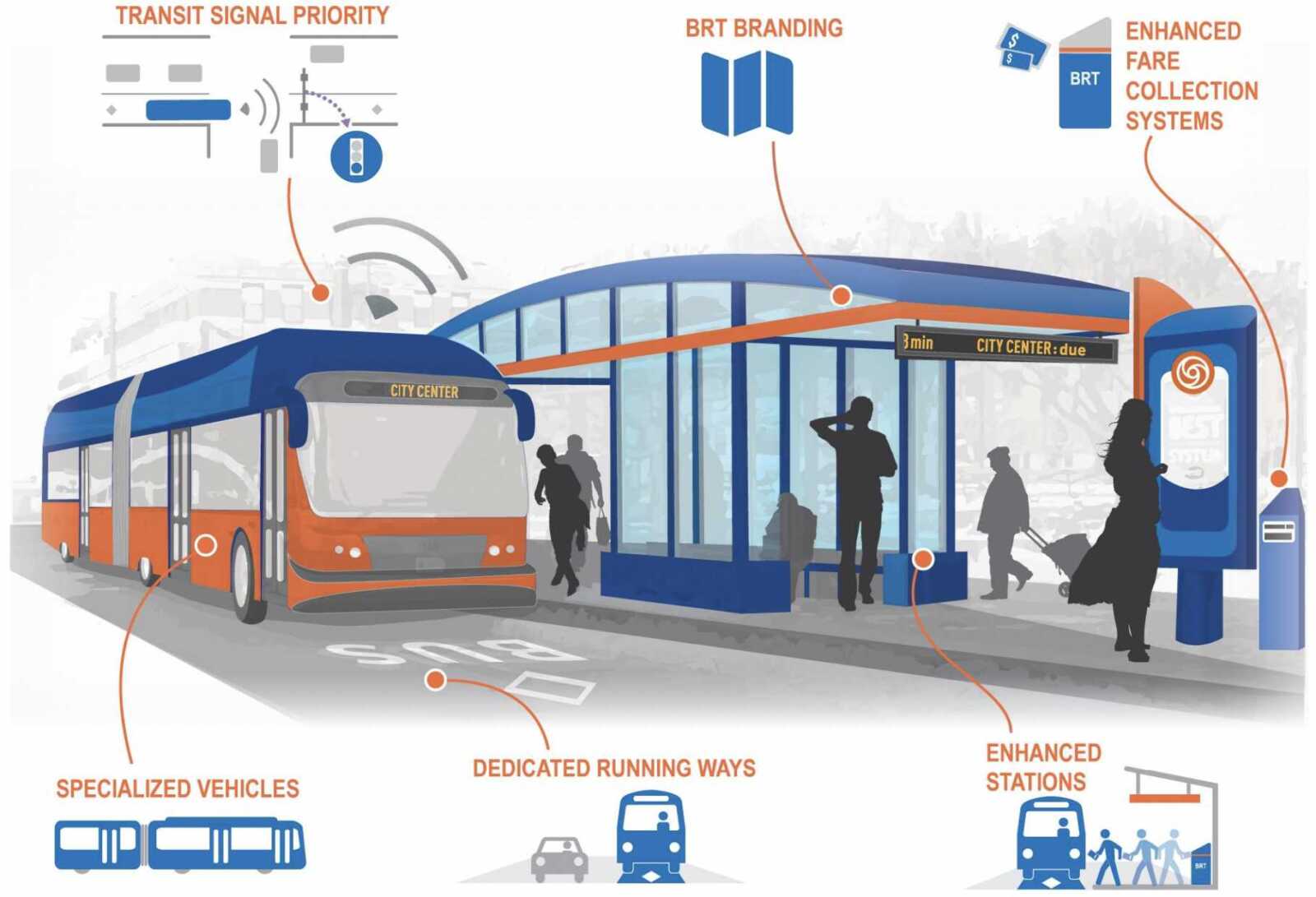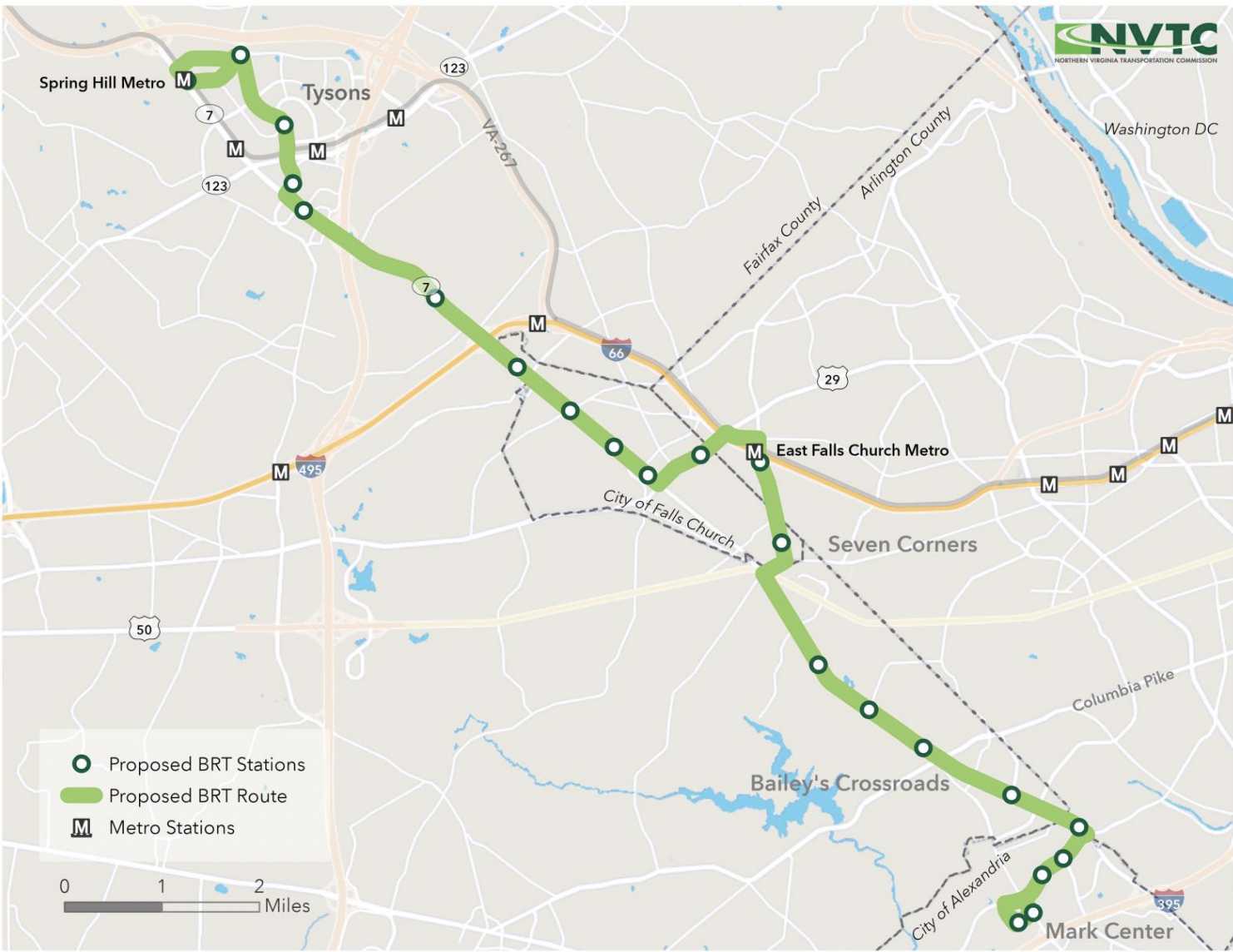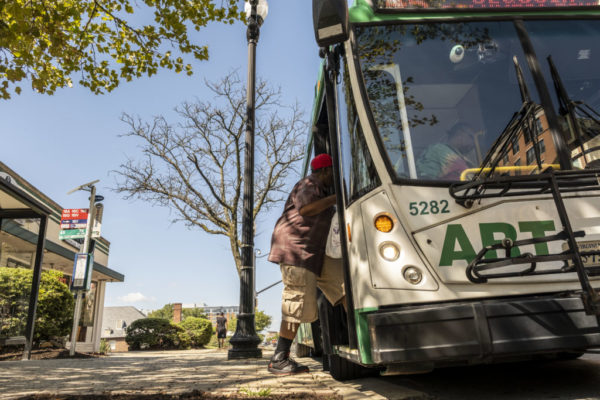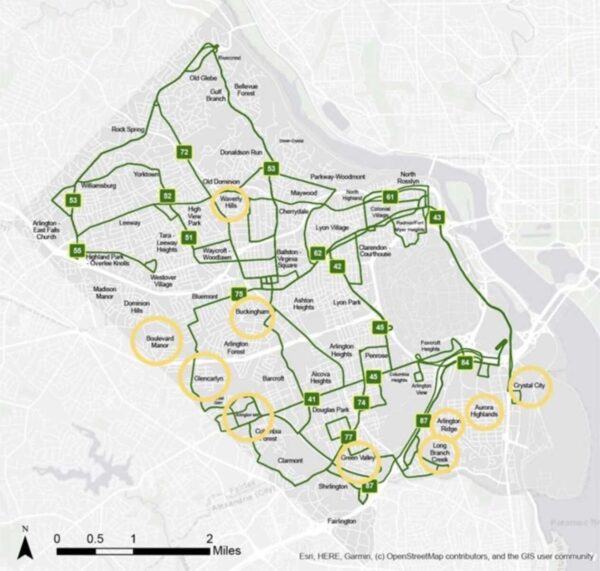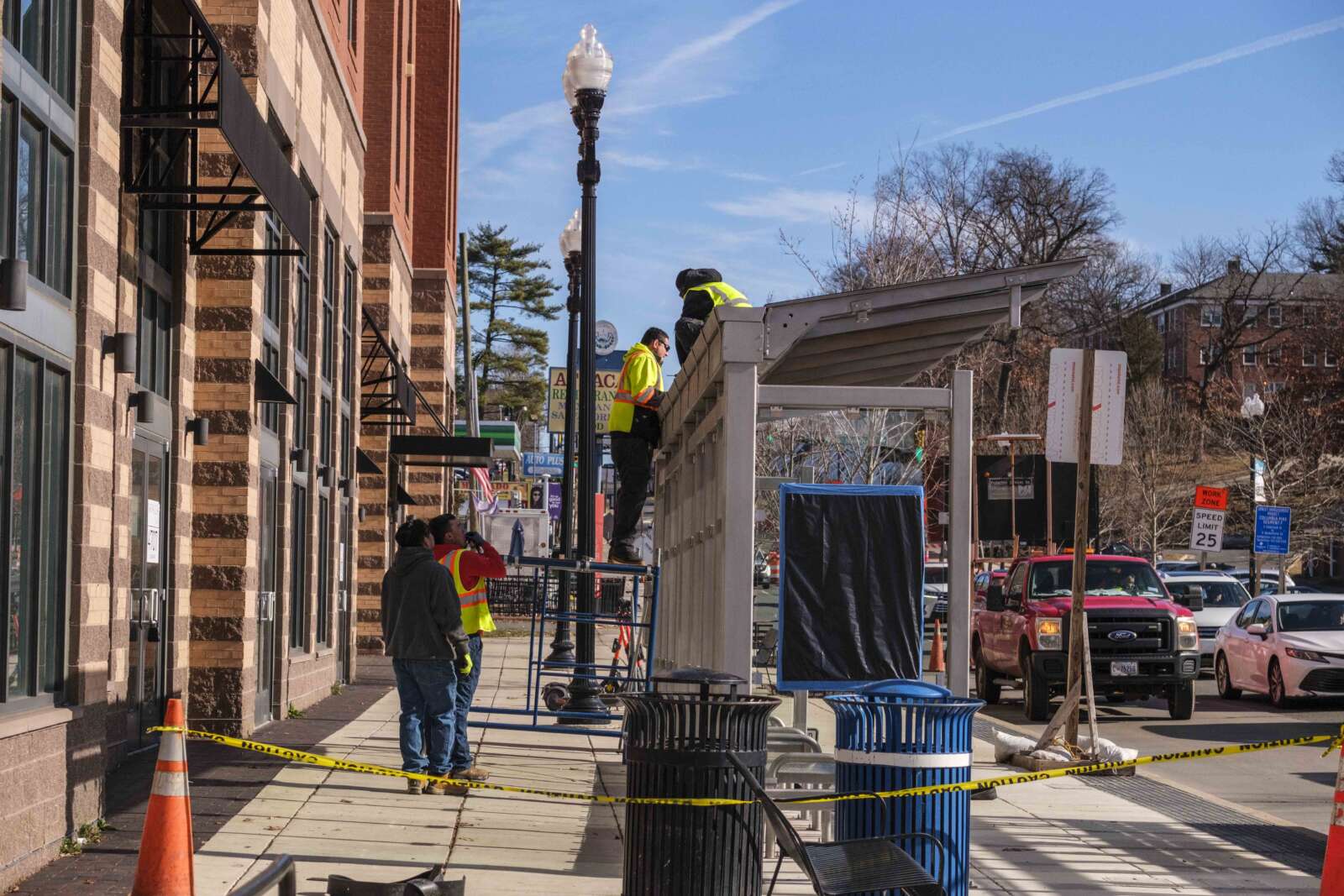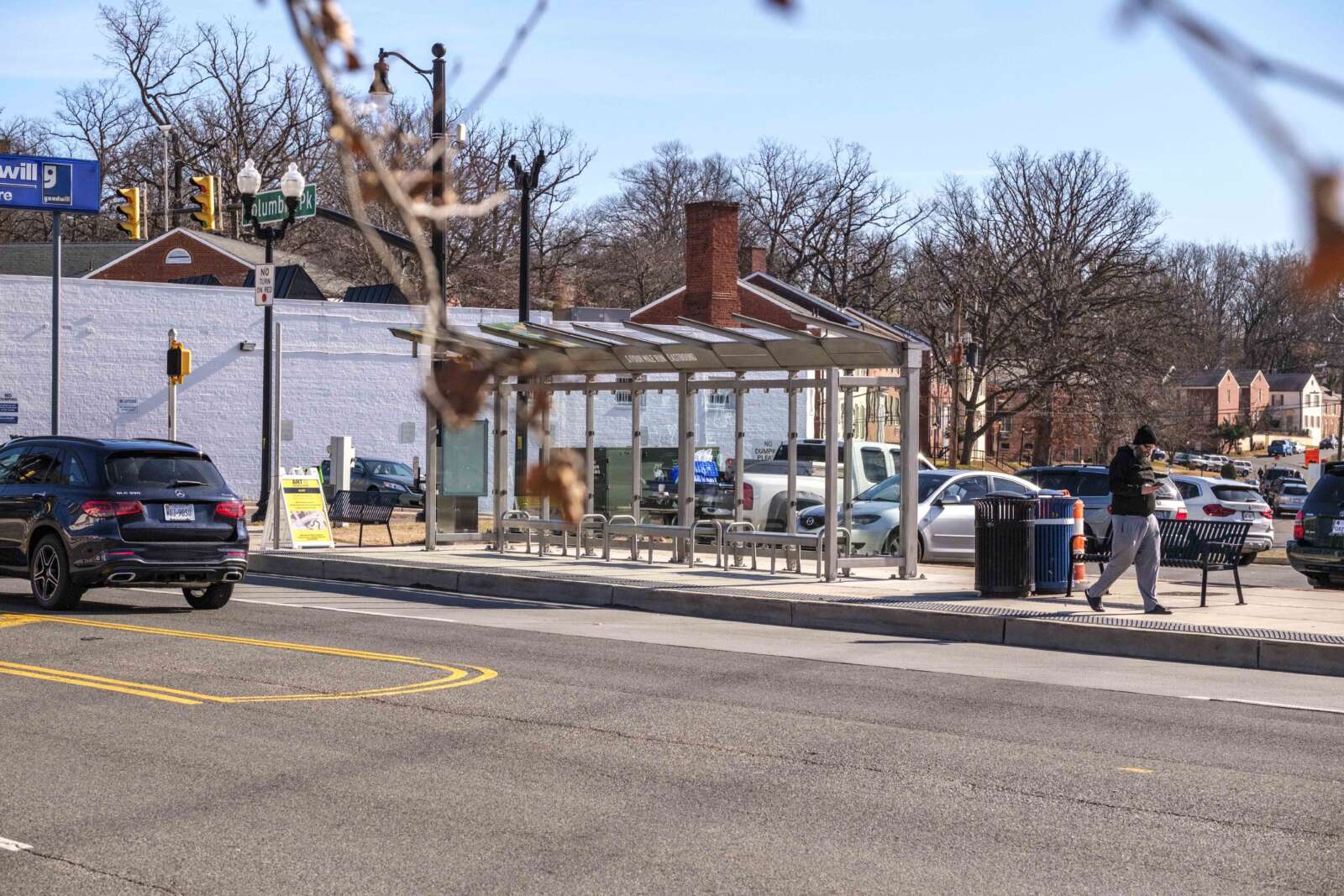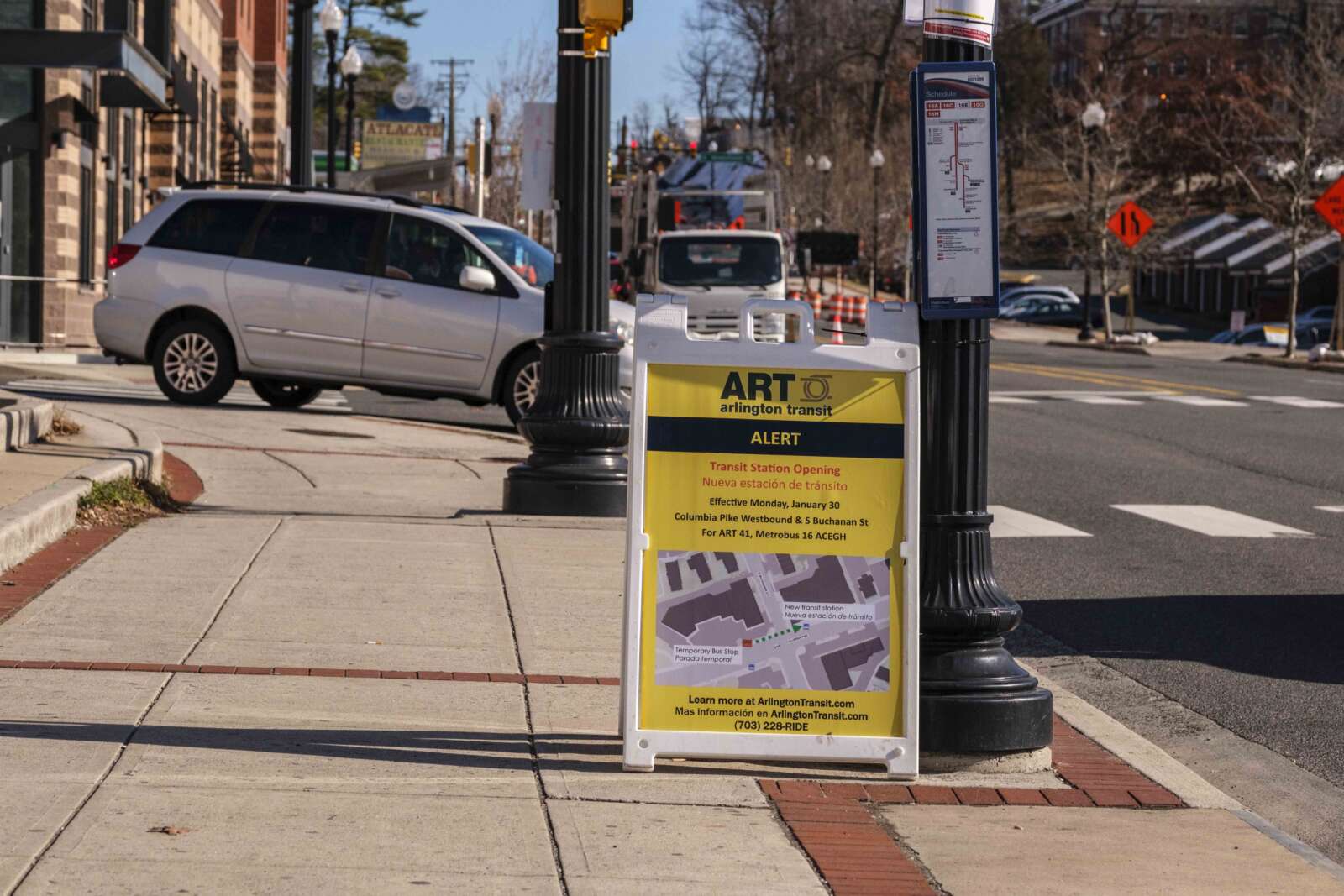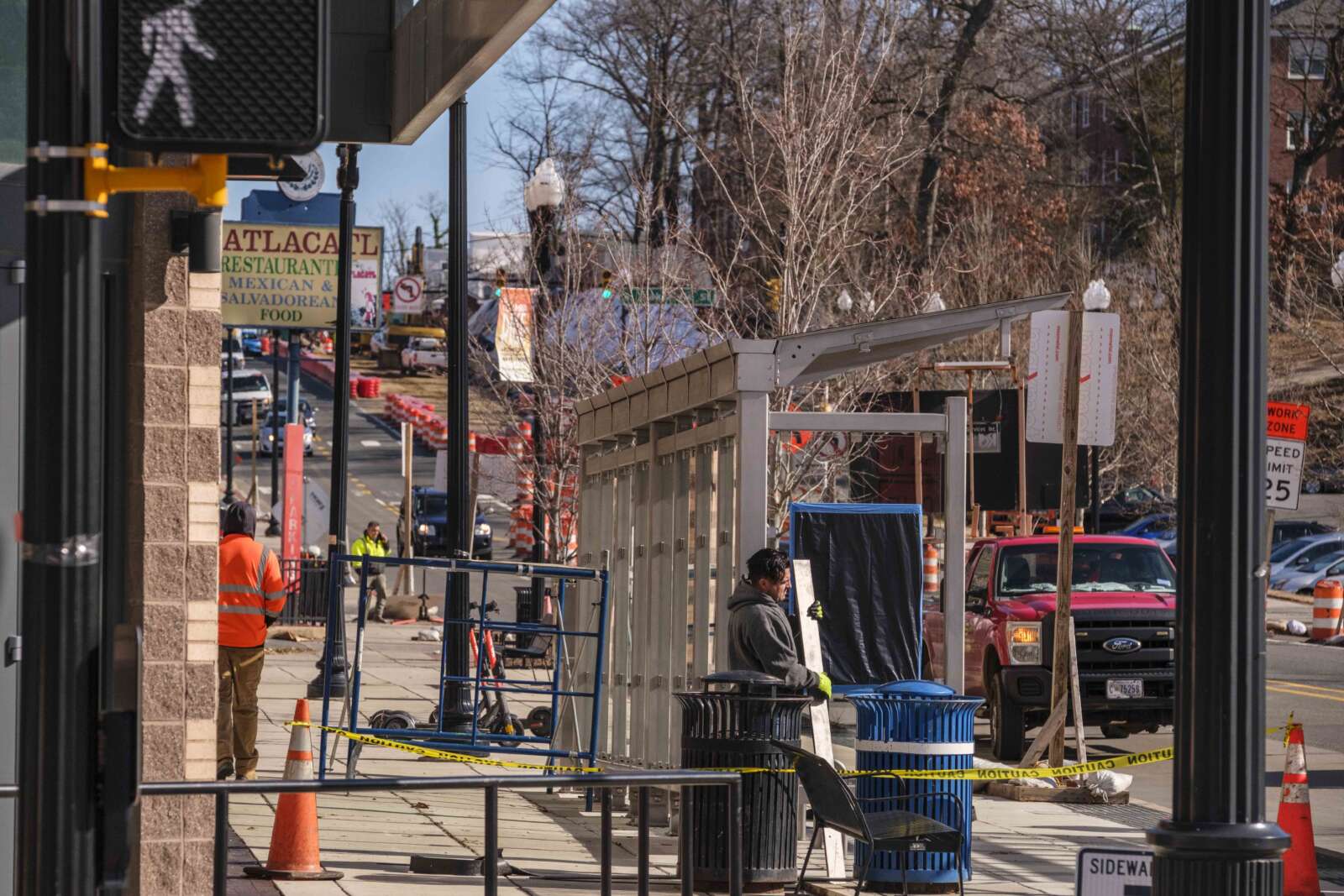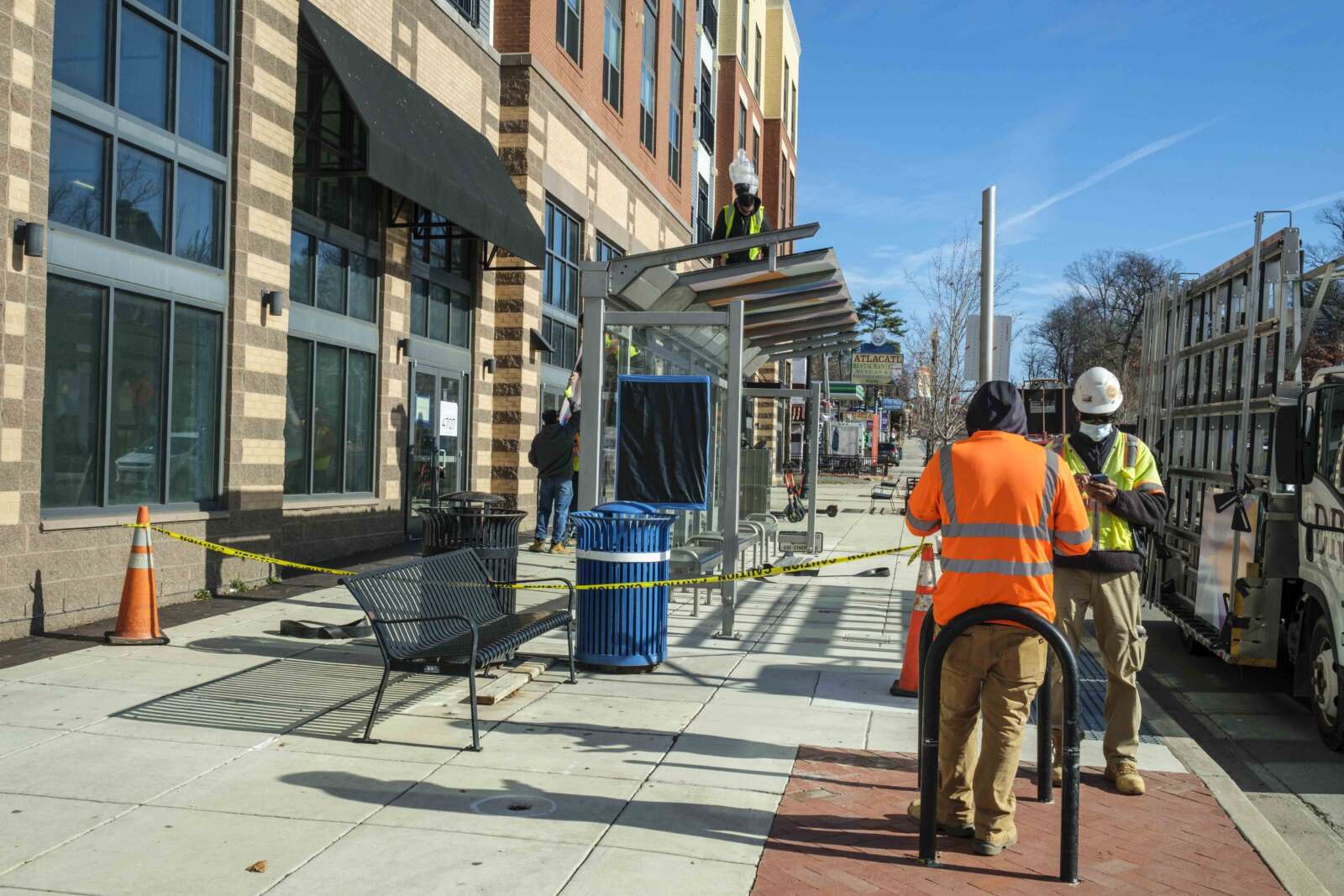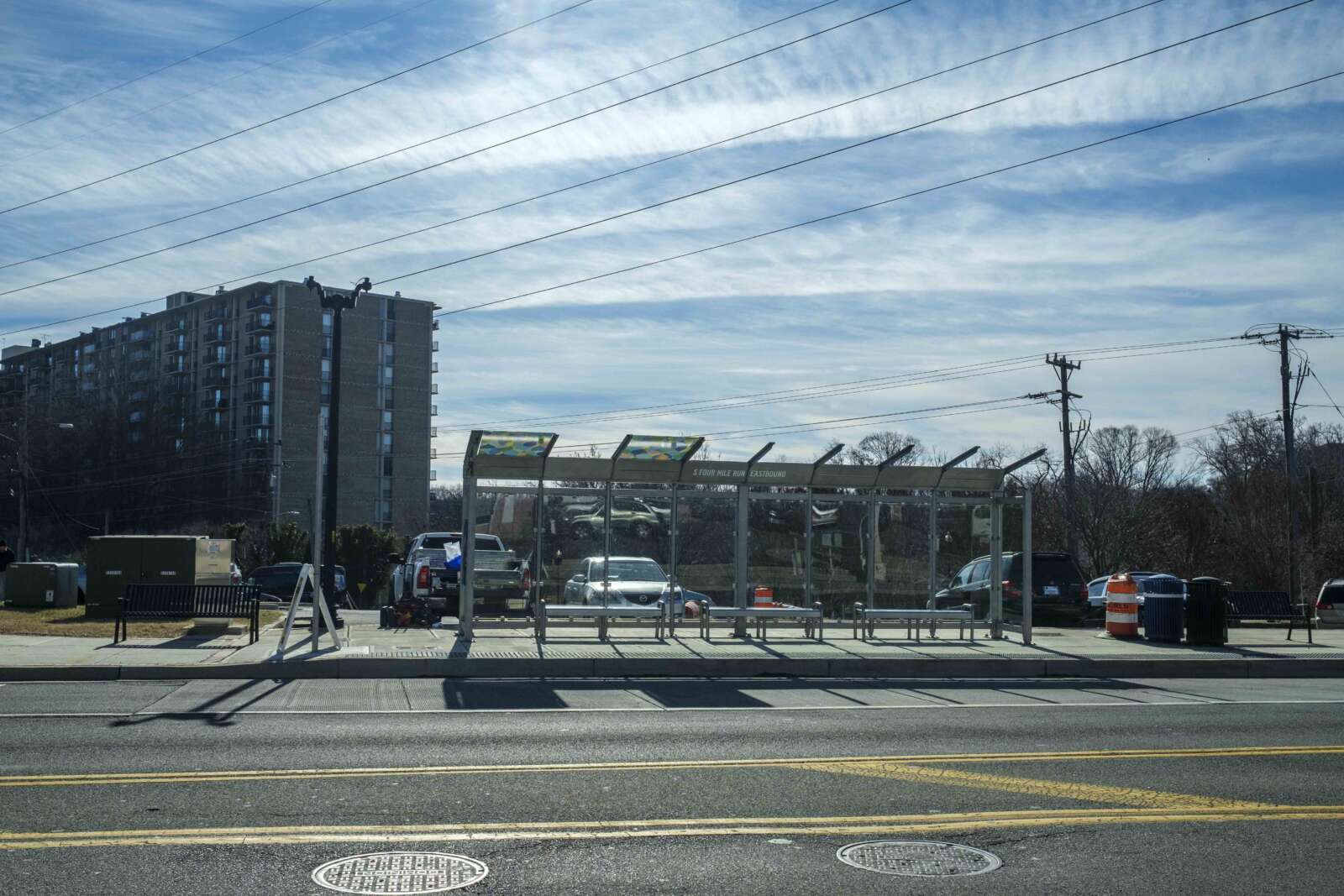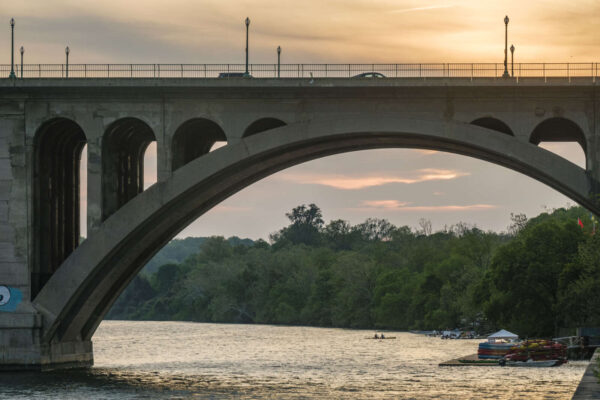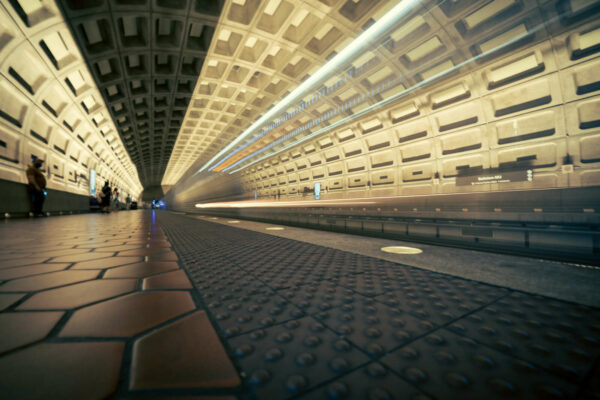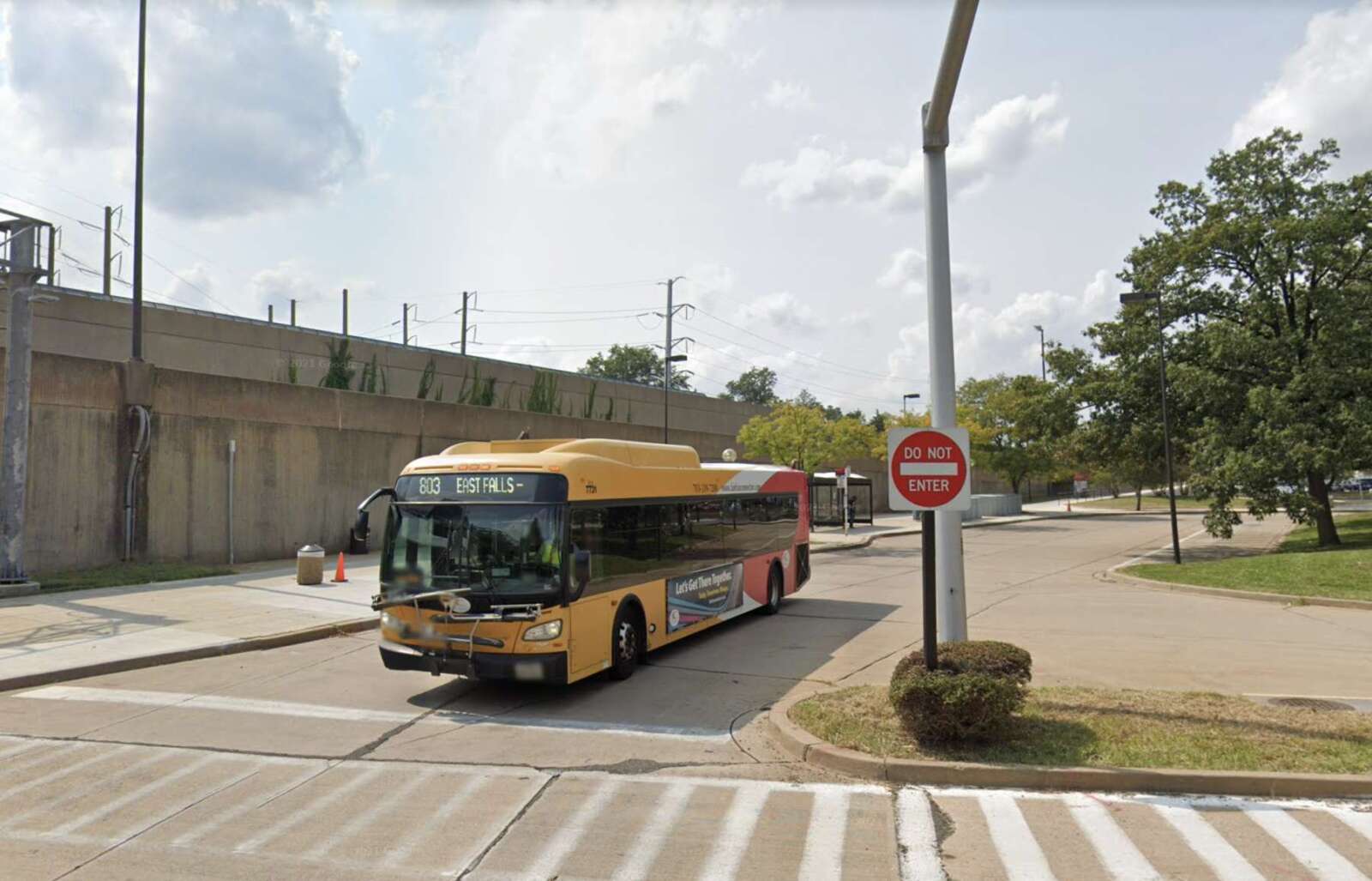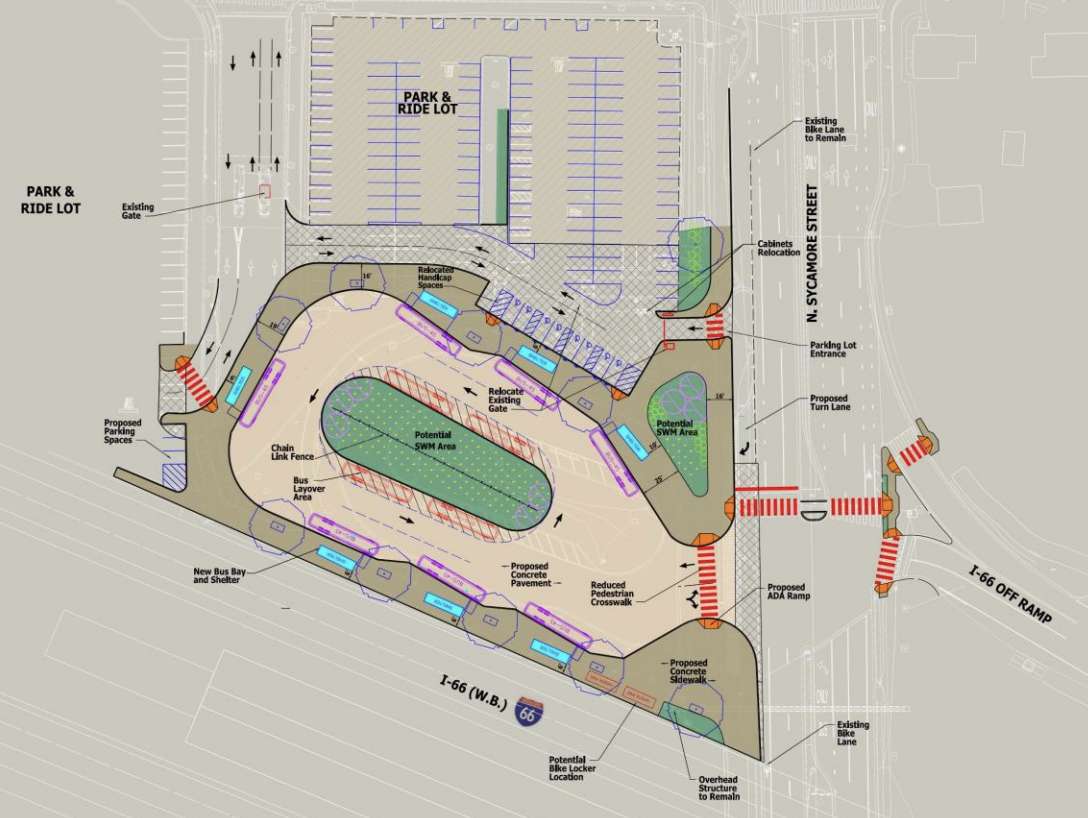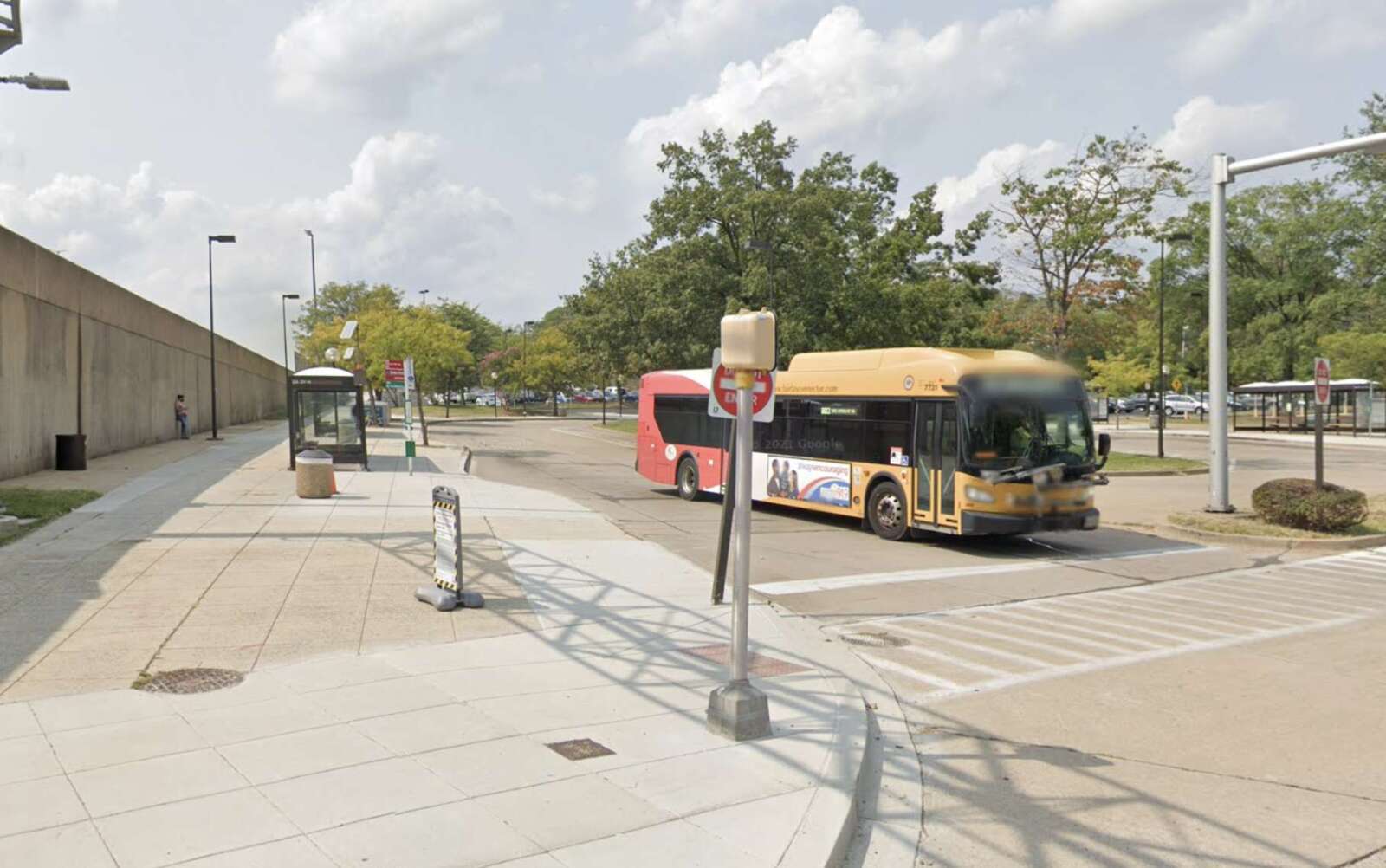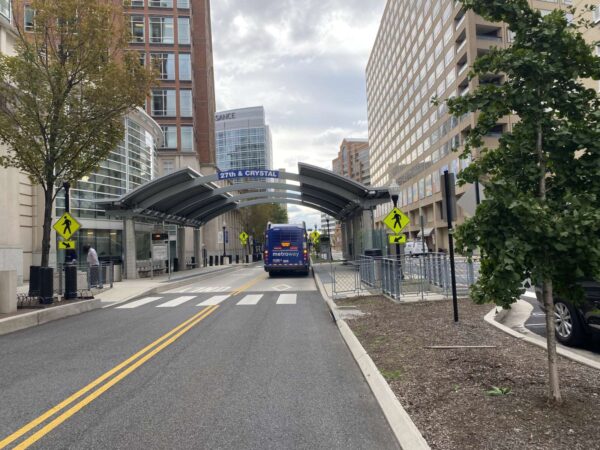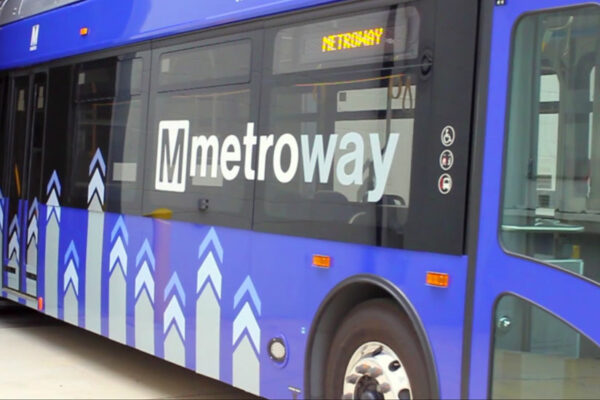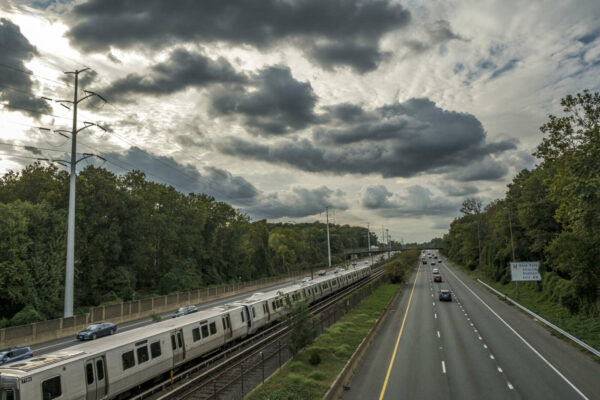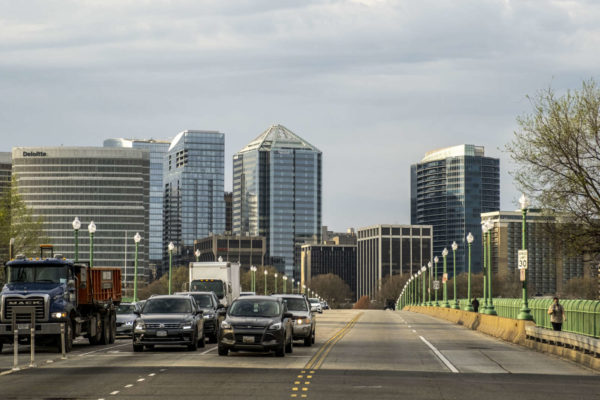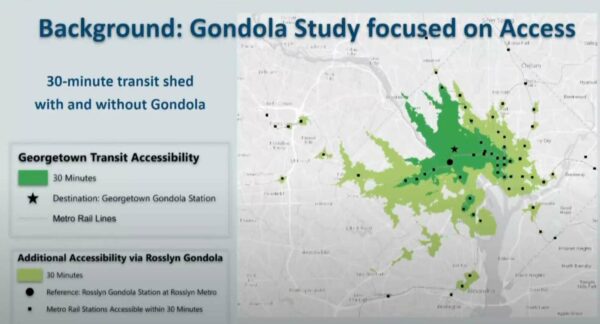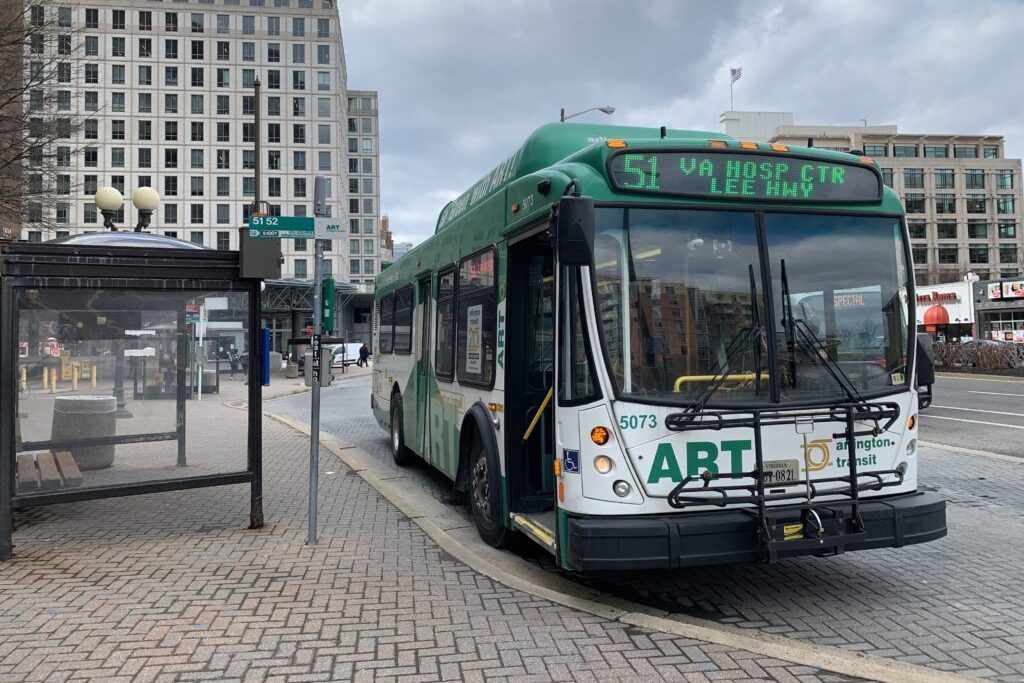
(Updated at 3:25 p.m.) Starting today, morning ART bus rides into Arlington and evening rides out during weekday rush hours will be free until the end of December.
The initiative is designed to ease I-66 congestion by encouraging the use of public transit, according to a county press release. It is funded by the Northern Virginia Transportation Commission (NVTC) Commuter Choice grant program.
“Skip the driving, save money on gas and tolls, and get to your destination stress-free,” the county says on the ART bus website. “When you ride instead of drive, you’re taking single-occupancy vehicles off the road, reducing both traffic and greenhouse gas emissions at the same time.”
Free fares will end on Christmas Day, per the release. To ensure passengers do not accidentally pay, fare boxes will be covered on buses headed in the direction with higher demand during rush hours.
Arlington received $1.35 million from NVTC, about $566,000 of which pays for free fares, Dept. of Environmental Services spokeswoman Claudia Pors said. The rest funds activities by Arlington County Commuter Services, which educates commuters and employers about sustainable transportation options.
The grant funding applies to routes along the I-66 corridor. Three ART routes outside the corridor will be free during the same period “for a seamless experience for all ART riders,” Pors said, noting the county’s transit bureau is paying $19,000 for these fares.
The county says it also supports expanding the free-ride initiative to include routes beyond the I-66 corridor. Funding for free fare initiatives comes from revenue from the Express Lanes on I-66, I-395 and I-95, which help finance various transit projects across the region.
ART already offers free transfers for rail riders who transfer from Metro to bus within two hours of taking Metro. Rides are also free for Arlington Public School with registered Student iRide SmarTrip cards.
In addition to the free bus initiative, NVTC funds are also supporting a proposed west entrance to the Ballston Metro station.
A list of free bus routes and times is below.



